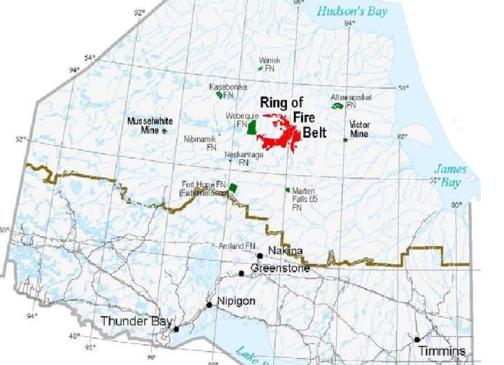This column was published in the January 5 and 7 editions of the Sudbury Star:
http://www.thesudburystar.com/2013/01/05/accent–ring-of-fire—miles-to-go-before-we-dig
http://www.thesudburystar.com/2013/01/07/miles-before-we-dig
Intro
It may be a cliché, but over the past six months, how things have changed and how they’ve stayed the same in the Ring of Fire. There may be some ongoing activity or discussions behind the scenes, but without a doubt, the declining state of the global economy, First Nations issues and Ontario politics seem to have halted any progress on a varity of issues.
First let’s look at the fragile nature of the world economy. The U.S. is still struggling, Europe is worse, with skyrocketing unemployment rates in many countries and China’s past double-digit expansion is gone. It is estimated that their economy will “only” grow seven per cent this year.
The price of commodities and the value of resource companies have plummeted. Many mining projects are being put on hold or cancelled while layoff notices are being handed out. Funding for junior exploration companies – the source of future discoveries like the Ring of Fire – has become almost imposible to find putting many on life support.
The stock price of Cliffs Natural Resources has plummeted from US$100.00 per share a year and a half ago to a little under US$30.00 recently. Cliffs has publicly stated that they are looking for a partner to help develop their northern Ontario chromite deposits. Recently the company has put their Bloom Lake iron ore expansion project in Quebec’s Labrador Iron Trough on hold and stopped production at two of their U.S. iron ore mines.
























